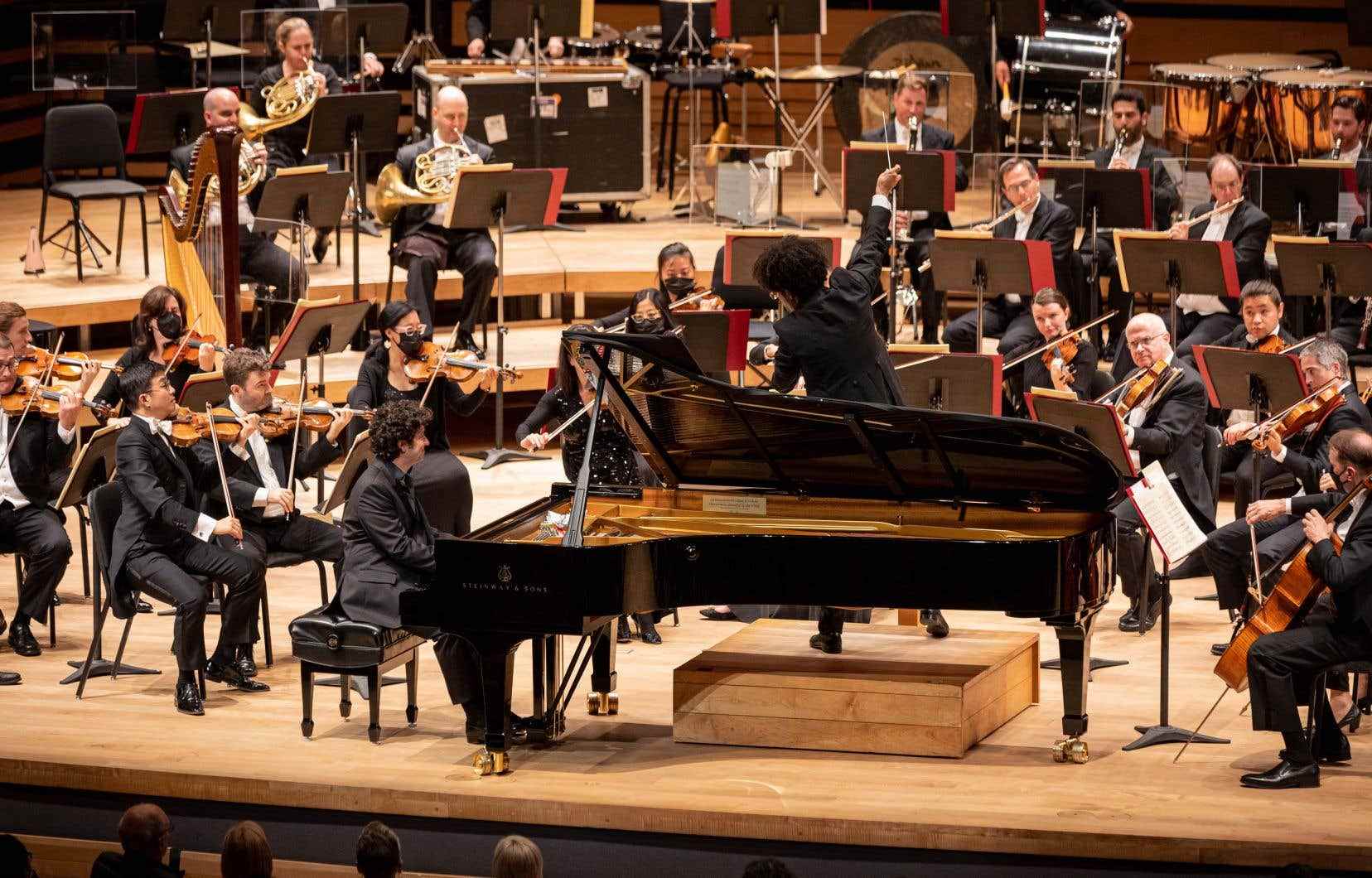After a lackluster evening at the Olympic Stadium, the least we can say is that the OSM and its conductor managed, in two remarkable concerts, to get the Virée into the halls off the ground at Place des Arts on Friday evening.
As The duty reported on Friday, the program of the first concert, bringing together the Legends by Jacques Hétu, the Rhapsody in Blue of Gershwin and Danzon No. 2 by Arturo Marquez, presented to 1,800 spectators at the Maison symphonique, would have been the ideal menu for the popular concert addressing a crowd 15 times larger.
The revival of Hétu’s work, made up of three parts (Alexis the Trotter, The Devil at the Ball and The hunt-gallery) demonstrated once again the accessible effectiveness of the musical language of the Quebec composer and his inventiveness. We also say to ourselves that the redundant number of times we heard the Tomb of Couperin by Ravel or The Roman Carnival by Berlioz over the past 15 years could have been largely halved to anchor this score firmly in our repertoire and musical culture. Payare and the OSM hosted our Legends fervently.
A new bolero
For the Rhapsody in Blue, our musical director had invited the pianist Sergio Tiempo, an unmistakable “showman”. The musical life it infuses with an almost twirling vivacity is exciting, but we have to ignore several fairly notable digital skids. Better a creative who crashes here or there than a flawless morose. That said, the impeccable inventiveness would obviously be ideal. We will have noticed in the orchestra the will to adopt a “jazzy” rascal tone. It is always delicate not to fall into the slovenly, the clarinet having taken the most risks from this point of view.
Perfect end to this concert with Danzon No. 2 de Marquez, one of the “standards” of the South American repertoire which could well become our “new Bolero” of the Payare era. As an encore on tour, it takes, of course, a second concert part with a piano in the orchestra, but it’s eloquent, effective and, to be honest, really irresistible.
During the following concert, Payare and the OSM sculpted a splendid Siegfried-Idyll ending in a suave and soft atmosphere. Admirable work not to linger in the transitions and to take care of the beauty of the textures.
James Ehnes then defended his admirable Concerto by Korngold, as we had already heard at Carnegie Hall with the NAC Orchestra, and which has the fortunate particularity of never making the speech syrupy, especially in a very fluid 1st movement. Unlike Tiempo, Ehnes was both artistically inspired and instrumentally imperial.
A happy surprise was reserved for us by a free addendum to this concert. Jeanine de Bique and Esther Gonthier, whose recital at Maisonneuve had been cancelled, offered us half of it with, from Purcell, The blessed virgin’s expostulationby Strauss, Drei Lieder of Ophelia and two Caribbean folk songs. The singer from Trinitad and Tobago who, to describe and contextualize Caribbean folk songs, used the “n-word” with confusing naturalness without offending herself or causing the slightest reaction, was vocally stunning, especially in the Lamentations of the Virgin of Purcell, with control of the breath, a richness of mediums and low-mids confounding.
Where will this rare and precious voice go, used until now by interpreters of the Baroque repertoire but who can see infinitely far?
The Classic Spree
Concerts III and V. Hétu: Legends. Gershwin: Rhapsody in Blue (soloist: Sergio Tiempo). Mark: Danzon No. 2. Wagner: Siegfried-Idyll. Korngold: Violin Concerto (soloist: James Ehnes). Montreal Symphony Orchestra, Rafael Payare. Maison symphonique, Friday 12 August.
